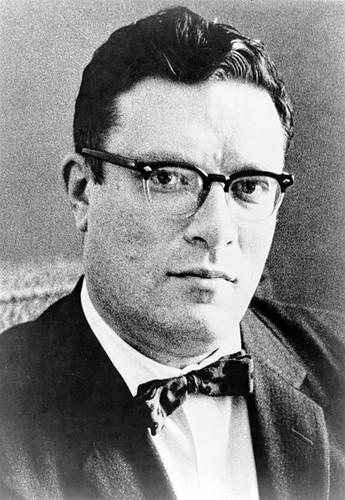

Divided for Publication: The 1990 Portuguese translation was split into two volumes Nove Amanhãs: contos do futuro próximo, 1℃ volume contains " I Just Make Them Up, See!", " Profession", " The Feeling of Power", " The Dying Night", and " I'm in Marsport Without Hilda", while the 2℃ volume contains the other five stories and " Rejection Slips".Design Student's Orgasm: The original 1959 Double Day cover is a very busy greyscale image of space that was probably done because it screams Science Fiction, with spaceships, nebulae, and moving rays of light.Deliberately Monochrome: The original 1959 Double Day cover has a greyscale image of space with slight green tinting by the spine, while Isaac Asimov's name and the Doubleday icon are a solid bright green.Dedication: This collection is dedicated to Betty Shaplan, for their helpfulness and kindness.With a bit of Artistic License, this could be intended to be the opening of " The Gentle Vultures", where Captain Devi-en, an alien monkey, is wandering around the surface of the moon in his spacesuit. Cover Drop: In the Del Rey cover from 1985, a monkey wearing a spacesuit with a clear faceplate is looking over their shoulder at the audience with the Earth in the sky like a giant moon.Pan Books, Del Rey, and Publicacoes Europa America have covers where his name is around twice as large as said title. Billed Above the Title: All of the covers, except for a UK Book Club cover, lists Isaac Asimov's name before the title.Alien Sky: The 1972 Creator Pan Books cover features two moons in the background, one of which is nearly hidden behind Isaac Asimov's name.Advertising by Association: The Del Rey cover from 1985 includes a Tagline pointing out that Dr Asimov is also the author of the national bestseller Foundation's Edge.Adaptation Deviation: The 1966 German translation, Unendlichkeit x 5, contains only five of the original nine stories and none of the poems." All the Troubles of the World" (1958).


The nine numbered Science Fiction stories each provide a different perspective on what the future might be like. Two works of comic poetry begin this collection, both playing with the difficulties of writing. An alternate title is Nine Tomorrows: Tales of the Near Future. Genre Anthology of Isaac Asimov's works, first published in 1959 (printed by Doubleday).


 0 kommentar(er)
0 kommentar(er)
